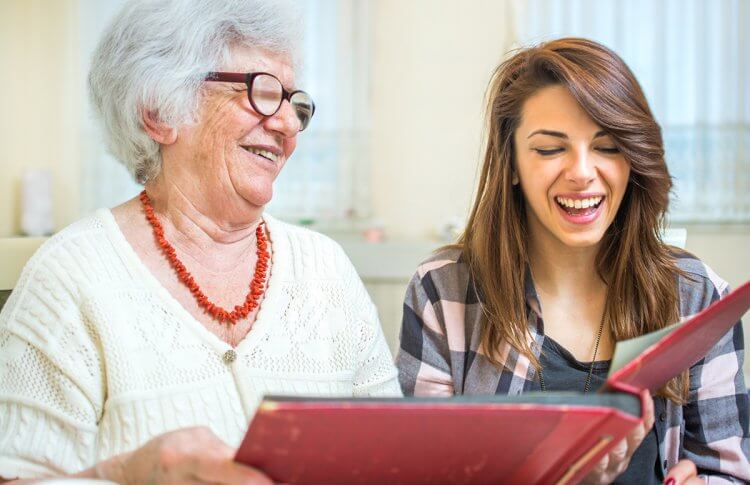English author, churchman, and historian Thomas Fuller once wrote: “Memory is the treasure house of the mind wherein the monuments thereof are kept and preserved.” It’s easy to think that these little “treasure houses” in the mind can stand on their own forever, especially if the memories themselves are happy, poignant, and deeply layered. But the truth is, like other aspects of ourselves, our capacity for remembering is limited—it becomes harder to hold on to our memories when we age, when we relocate, or when our mementos become scant or vulnerable to deterioration.
But that doesn’t mean that we shouldn’t try. On the contrary, we should be in the business of preserving our memories for as long as we can so that they can leave their marks not just on us, but on other people who are important to us.
As such, it’s a good idea to begin actively conserving meaningful memories for posterity. Whether you’re doing it for yourself, your friends, your significant other, your children, or the elderly members of your family, preserving such memories could be a fun and fulfilling endeavour. If you don’t know where to start, here are eight inspiring suggestions.
- Professionally frame your favourite photos. Many already invest in high-quality photography for occasions like weddings, university graduations, or formal family portraits. But if you print those photos out and get them professionally framed, perhaps by a picture framing Perth company, you’ll add to the beauty—and the poignancy—of those corresponding memories. By customising the frame material, the glass display, and other details, you will have mementos that live up to the specialness of the occasions they captured.
- Make a memory trail for whenever you travel. Have plans to visit another locality in Australia, or perhaps even a foreign country? Make sure that you capture the spirit of the place, as well as how you felt when you were there, by gathering mementos for yourself. You can visit the area’s post office and send postcards to your loved ones (or even yourself!) with messages about your experiences. You can also visit a local market, a museum, or a heritage site and buy a token that fully encapsulates the area’s culture, tradition, and beliefs. Once you look at these things again, you will remember the magic of discovering a new place.
- Keep a scrapbook. If you are already something of a pack rat with old letters, handwritten notes, tickets, ribbons, or even receipts, you can compile them all in a scrapbook. You can be as organised as you like (sorting these items as “Concerts I’ve Been To,” “Letters from Friends,” or “Special Events I Was Invited To”) or as creative as you like (decorating the pages with stickers, painting on them, or applying different colour schemes). What matters is that evidence of these memories will be all in one place.
- Wear commemorative jewellery. Wearing a wedding or engagement ring isn’t the only way you can use jewellery to commemorate something important. Some heartwarming examples are: having a piece of jewellery engraved with the date that one was declared free of cancer, or the day that one was accepted into a new faith. You can either invest in quality jewellery or obtain something simple and classic, and have it cast or engraved to incorporate the details of your memory.
- Have a Plaster of Paris paw print mould done for your pets. A lot of us consider our pets to be part of the family, and we dread the day that they pass away. Before that time comes, you can honour your cat or your dog by putting their unique paw print on a plaster of Paris mould. That way, you will have some permanent evidence of how your pet brightened up your life.
- Make a time capsule for each of your children, and give it to them on a milestone date. Set aside a box or a container to deposit various tokens of your children’s childhood—from a first tooth and a favourite toy, to handwritten letters and certificates and medals—and keep it in a safe, dry place. When it’s time for them to come of age, such as when they move out to attend university, you can bequeath them their box and reminisce together about how much they’ve grown up.
- Digitise photographs, videos, and other materials so that you can reproduce them later. This is a practice that you can apply especially for old family videos on cassette or CD format, old music albums, and old photographs or mementos that are owned by your parents and grandparents. These items are especially vulnerable to decay, and once they hit the end of their shelf life, they may be lost forever. Prevent that scenario by transferring them into a digital format, uploading them into your hard drive or into the cloud, and replicating new copies for them when necessary.
- Consult a preservationist about how to treat your family heirlooms. If you have some doubts about handling ancient or extremely delicate mementos without destroying them—say for example, your grandmother’s old wedding dress or your grandfather’s military medals—then you can also consult the professional services of a preservationist or museum archivist. They are trained to collect, restore, and record items of such historical (as well as generational) significance. You may even fancy having these heirlooms displayed in a local museum if you have the consent of their original owners!
As novelist Gustave Flaubert puts it, “a memory is a beautiful thing, it’s almost a desire that you miss.” Truly, we only experience these things once in a lifetime, and then we desire to relive them when they become our memories. With diligence on your part, you can experience the precious moments of your life time and time again—and then, when they outlast you, they’ll bring a life of their own to others.
To read more on topics like this, check out the lifestyle category.

Leave a Reply